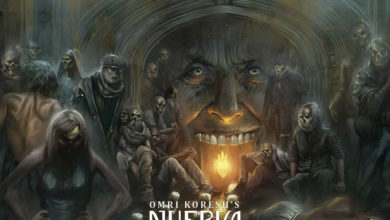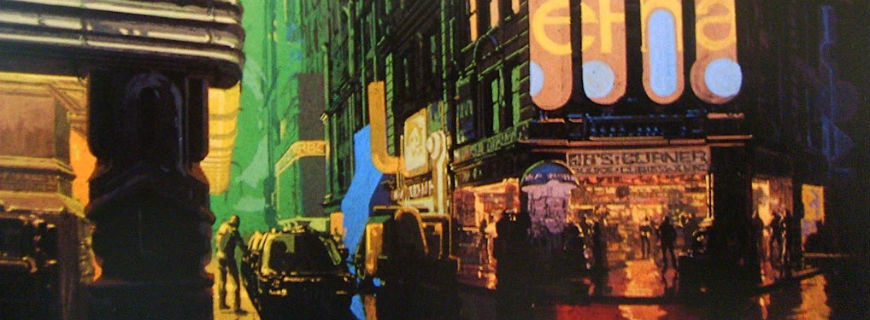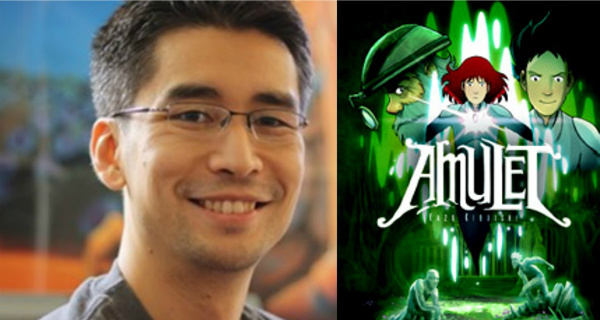Interview with Kathleen Jennings Illustrator of Gobbolino, the Witch’s Cat
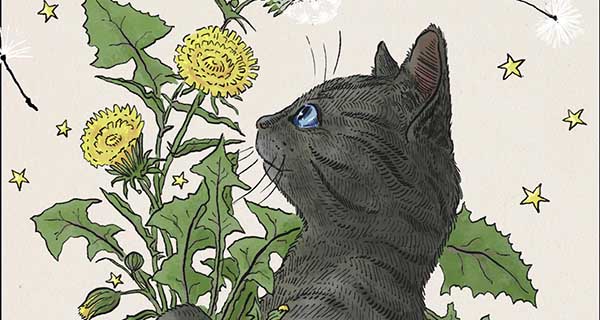
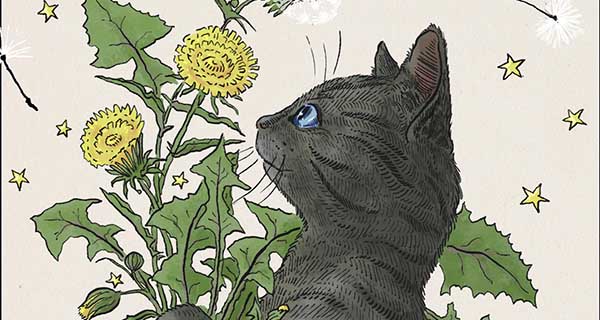
In anticipation of the release of the Hebrew translation of Gobbolino, the Witch’s Cat, by Ursula Moray Williams, published in Israel by Utz Publishing, we talked with Australian illustrator, Kathleen Jennings, to get a glimpse into the creative mind behind the illustration of the book.
First of all, hi and thank you for agreeing to have this interview. I’ve been an admirer of your work for quite some time now.
Thank you!
How did you get into illustration?
I’ve always drawn on anything which stayed still long enough. However, I studied literature and law instead of art. I had a few illustrations published in local anthologies, but then one day I realized I wanted to take art seriously. So I drew every day, even if it was just a smiley face, and put illustrations on my blog at least every week (I would do the Illustration Friday weekly challenge (illustrationfriday.com) – I still do when I have time between projects). Then one day people I knew gave the link to my blog to some publishers, and I got to do my very first book cover.
How long have you been in the business and how many books did you illustrate?
It has been 7 or 8 years since I did that first book cover. I don’t know how many books I have illustrated! I am bad at keeping track. I am rearranging my bookshelves this month, so maybe when I put all my artist copies together I will find out. But I wasn’t drawing full-time, so it wasn’t as many covers as someone would have done who was working full time.
Who are your sources of inspiration, or the artists you most admire?
I love so many, and I am always looking at beautiful art. It is like asking me to choose between my friends.
The illustrators who first made me want to draw are Pauline Baynes (because she created my image of Narnia), Trina Schart Hyman (because her people are so pretty but weighty), Arthur Rackham (for his spooky trees), Charles Vess (for the lightness of his faery-folk) and lots of the artists who illuminated medieval manuscripts with such lively, funny pictures (I found them through Pauline Baynes’ illustrations for Tolkien’s book Farmer Giles of Ham).
I like all the old painters who have movement and story in their pictures, but I like them best when they paint faces that are heavy and interesting and amused – faces that belong to real people who are thinking and trying not to laugh while they sit for their portraits. And I really like Art Deco design and advertising art, because it is so clean and simple but also still very beautiful.
Some illustrators I particularly like at the moment include Niroot Puttapipat’s pure golden-age style of drawings. I adore Shaun Tan’s work, which is bright and tactile and utterly fantastic, and also Rovina Cai’s soft dangerous pencil drawings (they are both Australian).
I have a lot of books of my favourite art, so that I can sit and look through them slowly.

How would you define your style/styles of illustration, and which technique is your favorite?
I read a comment by the illustrator Peter de Sève recently. He said, “An artist’s drawing is a catalogue of the shapes that he loves. When I’m drawing something, I’m trying to find the shapes that please me. I believe that’s what makes up what people refer to as a style.”
That is a very good explanation. Someone else could probably describe my art better – I have called it everything from “golden age illustration” to “a bit like Quentin Blake”!
Pen and ink has a lovely quick elegance. Paper silhouettes are a fun challenge. But it is all just me, trying to find shapes that please me. My favourite technique is the one that lets me do that, for that picture.
If I’m not mistaken, this year you’ve decided to become a full-time artist. Could you tell us a little about that choice? How did you come to make it, and were you not afraid to make that leap?
It is probably more accurate to say I decided to stop being a full-time lawyer! As well as illustrating, I am writing quite a bit, and I am also doing an MPhil (research masters) in creative writing (with illustrations).
I probably should have been afraid. However, it was definitely TIME TO DO IT: something was going to break if I didn’t make a change. I was being a lawyer AND illustrating AND writing and sometimes cleaning the house (hah!) but never really stopping.
Also, I’m not very good at making giant leaps. So I put lots of little safety nets in place. But it is lovely not to be split between Lawyer Kathleen and Storytelling Kathleen.
I once heard Robin Hobb say, however busy you are, you will never have more time than you do now. And it’s true! It is scary how little you can fit into a day, even when you have a whole one. Half hours are where the real work gets done.
How do you usually get a job? How do people get to commission a job from you?
The ‘usual’ usual way is for a publisher to email me, tell me their project and their budget, and offer me a contract. But ‘usual’ doesn’t happen all that often.
Sometimes authors ask me. Sometimes I am joking around with people on Twitter and next thing you know we have a story. I am illustrating some stories for one author at the moment, and then we are taking those to publishers to see if they want them.
From your wall on Facebook and your blog, it seems you’re always sketching, and documenting moments in your life. Do you think it puts a sort of barrier between you and the world, or rather, help you experience it more fully? Does that not get you into trouble or awkward moments, sometimes?
I am a tiny bit shy, so sketching helped me have something to do when I felt too awkward talking to people at conventions. Now I know so many people I hardly have time to sketch! It is quite nice to be the official illustrator at an event because it means I can keep sketching while talking to people, without it being rude.
I also sketch when I am travelling, instead of taking photos. I now have very good memories of slow-moving things! But I always feel that I’m not being a tourist in the ‘right’ way, so this lets me travel my way. Also I never used to get around to organizing photos.
So I think sketching lets me get out into the world. It also lets other people see things as I see them, which is one of the magical things about storytelling.
I have had a security guard in an airport come over to see what I was doing once, but he was very nice and let me keep going once he saw I wasn’t drawing a plan of the airport! Most of my sketches are just of people walking by – you couldn’t identify them unless you were there and knew. People who can pick themselves are usually charmed. It’s more about the feeling and the movement than the likeness, anyway. If I want to draw a portrait I will ask someone I know to sit still, or go to a drawing session.
Could you tell us about the interface between you and Gili Bar-Hillel, when working on Gobbolino the Witch’s Cat?
Gili and I have known each other for a while, which was lovely because we both know the other one loves books, and why. We met because we both loved Diana Wynne Jones’ novels. I think we were both hoping to work with each other one day, when the right project came along.
Because we already knew each other, that helped us communicate well. For example, Gili could tell me the changes she needed without having to learn how I would take criticism (at least, I hope she felt that way). And she could ask me to do the test sketches of cats which we needed to send to the author’s estate to get permission to use me as the illustrator.
Of course we had to do almost everything by email because I live in Australia, which means the time zones are different. But we didn’t have too many last-minute-urgent-emails that had to be answered right away, so that was okay. And I do most of my work by email, although it is a treat to be able to sit down in a room and work through a project with a client.
Because we are friends I think we also started having a lot of fun making fabric designs out of bits of the illustrations, too!

How do you go about beginning a new project, and how did you start working on Gobbolino in particular?
First I read the book and choose scenes which would be good illustrations. Then I am consumed by anguish and self-doubt for a while. This always happens and I now leave time for it, and work on something else. Then I practice drawing anything special for the book – I even took care of someone else’s cats for a week and drew them. Then I sent Gili a selection of very rough sketches – a few ideas for each chapter. She picked the ones she liked, and then I drew them.
Did you look at previous renditions of the story as reference or as a source for inspiration? If so, please tell us about it, and if not… why not?
I tried not to look at too many pictures until I had done the rough sketches. It is easy to be TOO like somebody else’s drawing, or go too far in trying not to draw like someone else. But it’s hard not to peek!
How long did you work on it, and what were the challenges and/or pleasures of making it?
The reading and the self-doubt always take the most time – but I did shade all the pictures twice, first on the computer which was too mechanical, and then with watered-down ink. It was extra work, but it was good to find something with which I was happier.
It was a lovely book to draw, so it was enjoyable finding shapes I liked which fit the story (to quote Peter de Sève again). Oh, and I don’t have any spindles, so I had to email my friends who do old-fashioned spinning to work out how you would hold a drop-spindle if you were using the thread to play with a kitten.
Also I had to draw the sea-witch twice, because Gili said I clearly liked her too much, since the drawing was too pretty! (You see, we do understand each other). So I drew her again but I gave the witch a pet catfish instead of a cat, because it made me laugh.

What did you think of the book? Did your opinion of the book affect your work on it?
I love the book. It is so pleasant, and all about finding a quiet place in the world, at least for a little while.
Liking a book can lead to problems like the sea-witch above! But it makes the whole process enjoyable. I have illustrated stories I don’t like, and that can be fun too, because I have to try to work out how to draw a story I don’t like in a way I find attractive. I think it is good when illustrations transform the story, and make something new.
Sometimes if I like a book too much I don’t want to accidentally ‘change’ something, and then I have to make myself let go, and risk it, although it isn’t really a risk.
How do you know when an illustration is ready to be sent off? Does it happen to you that you see your work in print and think that you could have done a better job with it?
When I’m happy with it. That sounds simple, but it probably isn’t. It involves composition and colour and weight of line and where it will fit in the text and accuracy and whimsy… However I don’t break it down like that. I just keep drawing until I am happy with the shape. And sometimes I will need to redraw it if doesn’t suit the publisher.
Every project teaches me more about drawing. So when I look back once it is done, I see how the current version of me might have drawn it differently. But it is always the best the old version of me could do.
If you could choose any writer, from anywhere in the world and any time in history, who would you like to illustrate for, and which of his/her work would you choose?
To illustrate? At the moment, I’d really like to do a set of fun, funny illustrations for Pride and Prejudice. Maybe I’ll do that to entertain myself. And I’d want to illustrate Charles Dickens’ novel Our Mutual Friend as if it were a fairy tale, which it sort of is. Oh, and Catherynne M. Valente’s Fairyland books, although I do like the current illustrations very much. And any Diana Wynne Jones, but most of all Dogsbody and Howl’s Moving Castle. And Mary Poppins, and, and, and…
If you could go back in time and meet yourself, what advice would you give beginner Kathleen?
Hang in there! Keep doing what you’re doing. Draw a lot. Talk to people about stories.


